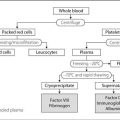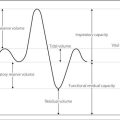Q
Q wave, Initial downward deflection of the QRS complex of the ECG (see Fig. 59b; Electrocardiography). Small (q) waves are normal in leads aVL and I when left axis deviation is present, and in leads II, III and aVF with right axis deviation. They may be large in aVR. Pathological (Q) waves are wide (e.g. > 30–40 ms) and deep (e.g. > 2–4 mm, or more than a quarter of the height of the R wave in the same lead). In the absence of left bundle branch block they suggest MI, which may be old or of new onset; in acute S-T elevation MI, Q waves are associated with poorer outcomes.
QRS complex, Represents ventricular depolarisation; normally follows the P wave of the ECG (see Fig. 59b; Electrocardiography). Upper-case letters are used if a particular wave is considered large, lower-case if small. The initial deflection is termed the q (Q) wave if downward, and R wave if upward. The downward S wave follows an R wave. The QRS complex may be used to calculate the electrical axis. Normally has rS pattern in V1, qR pattern in V6. The initial small deflection represents left-to-right septal depolarisation; the larger subsequent deflection represents (mainly left) ventricular depolarisation. Normal duration: < 0.12 s. Abnormalities may represent arrhythmias, heart block, bundle branch block or MI.
Q–T interval, Represents the duration of ventricular systole; varies with age, sex and heart rate. Measured from the beginning of the QRS complex to the end of the T wave of the ECG (see Fig. 59b; Electrocardiography). Corrected for heart rate by dividing by the square root of the preceding R–R interval in seconds (Bazett’s formula). Normal range is 0.35–0.43.
Shortened in hypercalcaemia, hyperkalaemia and digoxin therapy. Prolonged Q–T syndromes may be caused by hypocalcaemia, hypothyroidism and hypothermia, and are associated with recurrent syncope or sudden death due to ventricular arrhythmias, including VT and torsade de pointes.
[H Cuthbert Bazett (1885–1950), English-born US physiologist]
Q–Tc dispersion. Difference between the longest and shortest measurable corrected Q–T interval on the 12-lead ECG. Originally described using manual calculation, although automatic measuring methods have been described. Has been shown to be a powerful predictor of arrhythmias and sudden cardiac death in several cardiac conditions.
Sahu P, Lim PO, Rana BS, Struthers AD (2000). Q J Med; 93: 425–31
Quality assurance. Systematic process by which the quality of care is examined and deficiencies analysed in order to develop strategies for improvement.
• Classically applies to three areas:
 process, i.e. how the care is delivered, e.g. anaesthetic techniques, monitoring.
process, i.e. how the care is delivered, e.g. anaesthetic techniques, monitoring.
 outcome, i.e. use of quality indicators, e.g. death rates, pain scores, patient satisfaction.
outcome, i.e. use of quality indicators, e.g. death rates, pain scores, patient satisfaction.
Various methods of investigating each of these areas have been described, often translated from use in industry or commercial business. Audit and risk management are commonly used in medicine. The drive for quality assurance programmes has come from clinical, administrational and political quarters.
See also, Clinical governance; Healthcare Commission; National Institute for Health and Clinical Excellence
Quantal theory. Widely accepted theory proposed in the 1960s to explain miniature end-plate potentials recorded from the neuromuscular junction postsynaptic membrane, at approximately 2 Hz. Postulates that small ‘quanta’ (packets) of acetylcholine are released randomly from the nerve cell membrane, even in the absence of motor nerve activity. Each quantum is thought to be one vesicle’s content, about 4000–10 000 acetylcholine molecules. During single motor nerve activation about 200 quanta are released into the synaptic cleft.
Quantiflex apparatus. Continuous-flow anaesthetic machines that can deliver preset mixtures of O2 and N2O, adjusted by a percentage control (minimum of 30% O2). A single dial adjusts total gas flow delivered. Individual flowmeters indicate flow of O2 and N2O; the O2 flowmeter is usually on the right, and N2O flowmeter on the left. They are sometimes used in dental surgery.
Quincke, Heinrich Irenaeus (1842–1922). German physician; described and standardised lumbar puncture in 1891, originally as a treatment for hydrocephalus. Used the paramedian approach and suggested 24 hours’ bed rest afterwards. His bevelled needle design is still used for lumbar puncture and spinal anaesthesia. Quincke’s sign is pulsation in the nail capillary bed and is seen in aortic regurgitation.
Quinidine. Class Ia antiarrhythmic drug. An isomer of quinine. Used to treat SVT and VT, but rarely used now because of side effects. Peak plasma levels occur 1–2 h following oral administration; half-life is 5–9 h. Highly protein-bound, it may displace digoxin if the two drugs are given concurrently.
• Dosage: 200–400 mg orally tds/qds.
• Side effects are common due to a low therapeutic ratio and include ventricular arrhythmias (e.g. torsade de pointes). Anticholinergic effects may result in GIT disturbances; CNS effects (cinchonism) include tinnitus and visual changes. Hypersensitivity reactions include rash, haemolysis and thrombocytopenia. Severe overdose results in confusion and psychosis.
Quinine sulphate/dihydrochloride. Antimalarial drug, reserved for treatment (but not prophylaxis) of falciparum malaria. Also used to treat nocturnal leg cramps.
4-Quinolones. Class of broad-spectrum antibacterial drugs, which include ciprofloxacin, levofloxacin, moxifloxacin and ofloxacin. More effective against Gram-negative than Gram-positive bacteria, they have limited activity against anaerobes. Side effects include prolonged Q–T syndromes, spontaneous tendon rupture and muscle weakness. May also induce convulsions in susceptible individuals, especially if NSAIDs are taken concurrently. They should be used with caution in hepatic or renal impairment.
Quinupristin/dalfopristin. Antibacterial drugs combined in a 3 : 7 ratio, presented as a mixture of mesilates. Active against Gram-positive bacteria (including staphylococci but excluding Enterococcus faecalis) resistant to other antibacterials. Inactive against Gram-negative organisms.







